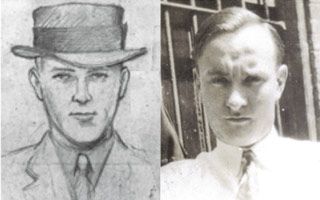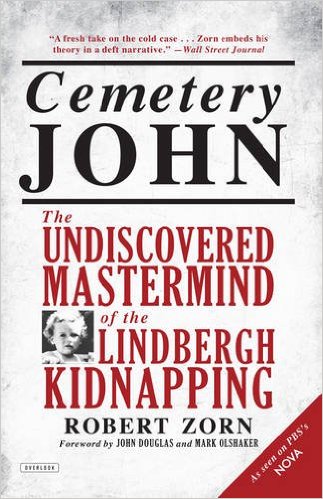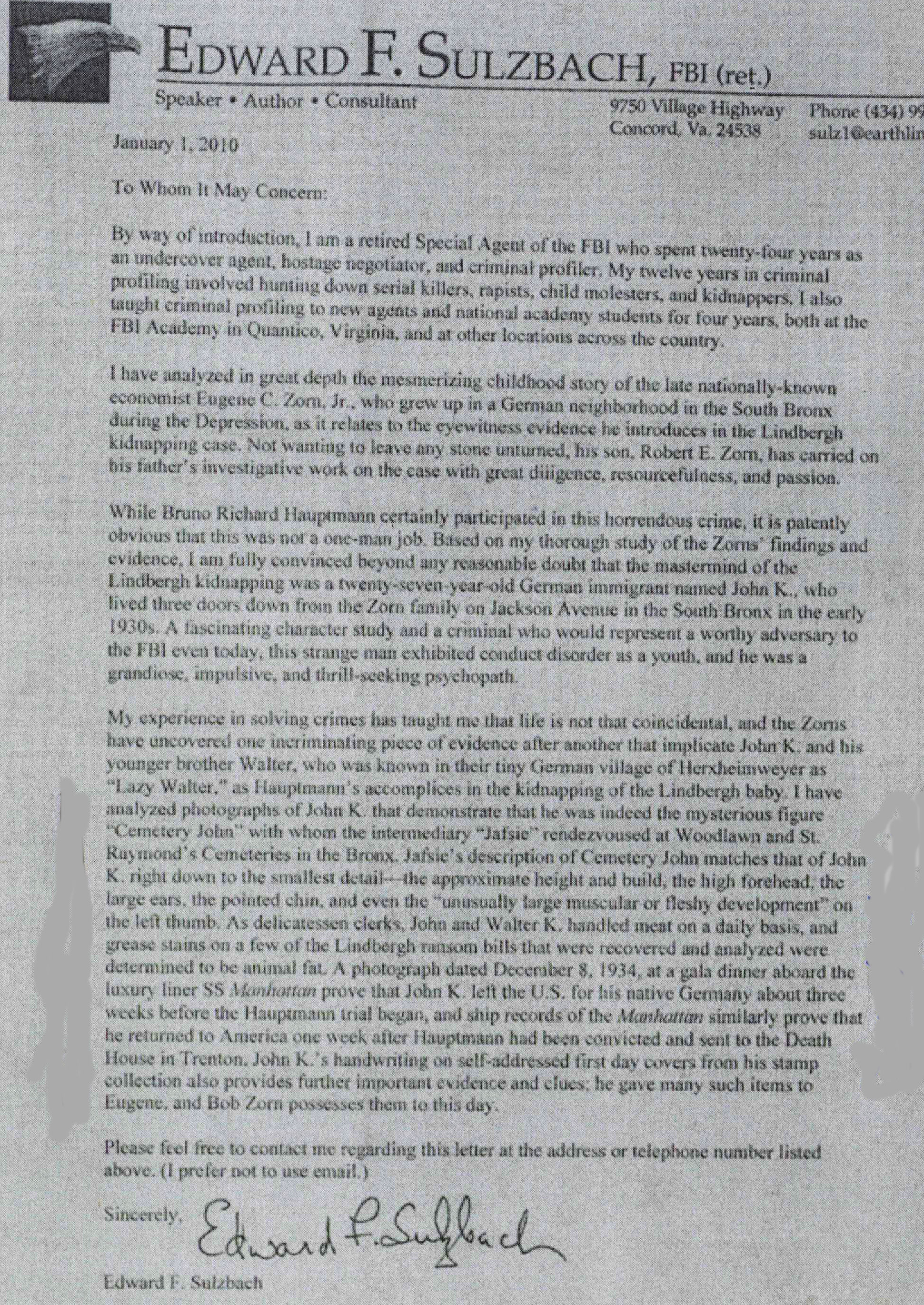
People who have studied the Lindbergh kidnapping case have long suspected that Bruno Hauptmann did not act alone. Among the facts that point to involvement by another kidnapper are the following facts:
(1) Two sets of footprints, not just one, led from the Lindbergh home to Featherbed Lane (it was near these two sets of footprints that investigators found the discarded ladder).
(2) It would be virtually impossible for anyone acting alone to have climbed the 30" or more from the top of the ladder to the window of the bedroom, grabbed the child, and the climbed back down the ladder. The baby was almost certainly handed off to a second kidnapper at the top of the ladder.
(3) At a police line-up, Dr. Condon could not identify Hauptmann as the man he met twice in cemeteries and specific features that Condon noted on "Cemetery John" are not shared by Hauptmann.
Recently, Robert Zorn, in his book Cemetery John: The Undiscovered Mastermind of the Lindbergh Kidnapping makes a compelling case that "Cemetery John" was not Hauptmann, but rather another German-American acquaintance of Hauptmann, a man named John Knoll. Zorn's interest in the case arose from a story from his youth that his father, Eugene Zorn, told him. According to Zorn's father, a German-American neighbor named John took him to a New Jersey amusement park in the summer of 1931, about nine months before the Lindbergh kidnapping. The neighbor met two other men near the entrance to the park, both of whom spoke German. Zorn's father obviously failed to grasp the details of the conversation between the three men, but distinctly recalls hearing the words "Bruno" and "Englewood." (The Lindbergh's had a home in Englewood, just four miles from the amusement park.) Years later, Zorn's father became convinced that he had overheard a conversation between three kidnappers of the Lindbergh baby and set out to prove it.
Beginning in 2009, Robert Zorn focused on trying to determine whether his father's theory was true. In the process, he uncovered substantial confirming evidence. Among the key facts pointing to Zorn's neighbor John Knoll being the actual "Cemetery John" are the following:
(1) A photo of John Knoll reveals that he much more closely resembles Condon's description of "Cemetery John" than does Bruno Hauptmann. In particular, Knoll matches Condon's description of a man with a high forehead, large ears, and a pointed chin. Even more notably, Knoll has a "fleshy development" on his left thumb, just as Condon had described.
(2) Knoll's handwriting on letters more closely matches handwriting on the ransom envelopes than does Hauptmann's.
(3) Knoll worked with meat in a deli, which could account for traces of animal fat found on some of the ransom bills.
(4) When the manhunt for the kidnappers began, Knoll left the Bronx and moved in with a sister in Detroit. Knoll traveled to Europe aboard the luxury liner S S Manhattan just three weeks before the start of the Hauptmann trial and returned to the United States only after Hauptmann's conviction and sentencing.
(5) The man Condon met in the cemetery identified himself as "John", not "Bruno." This suggests that Condon surprised Knoll by asking his name and that he gave his real first name.


